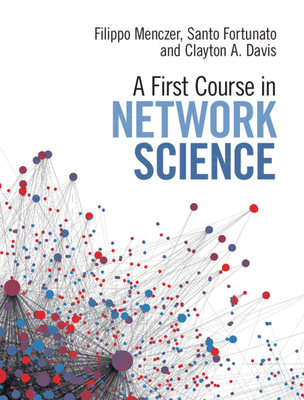商品描述
It is in the context of maturity that one needs to read the book – Master Data Management and Enterprise Engineering by Dr. M. Naoulo. The world of technology has several related yet distinct approaches – Martin’s and Finklestein’s information engineering, Ted Codd’s relational technology, Inmon’s data warehouse, and others. This book takes these approaches and others and does two important things – it blends them together and it takes the bodies of thought and turns them into an engineering approach. As such this book is another important step in the evolution of computer science. This is a next step in the maturation of computer science. I recommend it to any serious student of computer science or to any serious practitioner. =========== W.H. (Bill) Inmon. May 21, 2012. =========== The book establishes the Fundamentals of design, modeling, architecture, and management of Master, Transactional, and Process Data and the Principles of Enterprise Engineering. The book comprises innovative techniques and elegant approach and design to address: > Master Data Management thru grouping and classifying the Master Data in an innovative way that can be implemented across the Enterprise Data Architecture: Central Data Repository and Business and Enterprise Intelligence (BI & EI) Data Marts. This data classification is based on the questions: Why, How, Who, What, Where and When. > Separating the Master Data, Transactional Data, and Process Data. This separation enables the easiness in dealing with MDM, BI, and EI. The separation approach enormously facilitates the mapping and propagation between the Central Data Repository and the Business and Enterprise Data Marts. >The basics and techniques of the design of the Enterprise Engineering Model. This model supports the Transactional Systems, Business Intelligence, Business Process Management, Enterprise Intelligence, and Enterprise Engineering. > Synchronization and Integration of Master, Transactional, and Process Data across the enterprise: Legacy Systems, Central Data Repository, and Business and Intelligence Data Marts. > Assessing the different Enterprise Data Architectures. The first part encompasses the Enterprise Data Framework and its new Modeling Techniques. The Enterprise Data Framework illustrates and depicts the Data Architecture across the enterprise covering the integration and consolidation of the data of the Legacy Systems in a Central Data Repository and the propagation of this data into the Business and Enterprise Intelligence Data Marts. The Enterprise Engineering Model presents a clear and concise illustration depicting the Operational aspects of the Enterprise and their relations to the Enterprise’s needs. It includes: > Master Data representing the main objects of an enterprise, > Transactional Data detailing the results of transactions occurring in an enterprise, and > Process Data capturing the data pertinent to the activities of the functioning of an enterprise. The second part encompasses the Enterprise Engineering Framework, Methodology, Guidelines, Deliverables, and Techniques. It bestows the blueprint of the functioning of enterprises. This part details the basics of Enterprise Engineering and its implementation thru the processing of the Enterprise Engineering Model. It provides the cost data (materiel cost, labor cost, time) reflecting the functioning of the Enterprise and point out the efficiency, performance, strengths, and weaknesses of its operation. Detailed Case Studies are presented supporting the theoretical aspect of Enterprise Engineering. These Case Studies provide clear and practical hands-on exercises reflecting the functioning of the Enterprises and illustrating the implementation of Enterprise Engineering.
商品描述(中文翻譯)
在成熟度的背景下,讀者需要閱讀 M. Naoulo 博士的《主數據管理與企業工程》一書。科技世界有幾種相關但又不同的方法——馬丁(Martin)和芬克爾斯坦(Finklestein)的資訊工程、泰德·科德(Ted Codd)的關聯技術、因門(Inmon)的數據倉庫等。本書將這些方法及其他方法融合在一起,並將這些思想體系轉化為一種工程方法。因此,本書是計算機科學演變中的另一個重要步驟。這是計算機科學成熟的下一步。我推薦給任何認真學習計算機科學的學生或任何認真從業的專業人士。========== W.H.(比爾)因門。2012年5月21日。==========
本書建立了主數據、交易數據和過程數據的設計、建模、架構和管理的基本原則,以及企業工程的原則。本書包含創新的技術和優雅的方法與設計,以解決以下問題:> 通過以創新的方式對主數據進行分組和分類來實現主數據管理,這可以在企業數據架構中實施:中央數據庫和商業及企業智能(BI & EI)數據集市。這種數據分類基於以下問題:為什麼、如何、誰、什麼、在哪裡和何時。> 分離主數據、交易數據和過程數據。這種分離使得處理 MDM、BI 和 EI 變得更加容易。這種分離方法極大地促進了中央數據庫與商業和企業數據集市之間的映射和傳播。> 企業工程模型設計的基本原則和技術。該模型支持交易系統、商業智能、商業流程管理、企業智能和企業工程。> 在企業內部同步和整合主數據、交易數據和過程數據:遺留系統、中央數據庫以及商業和智能數據集市。> 評估不同的企業數據架構。第一部分涵蓋企業數據框架及其新的建模技術。企業數據框架展示了整個企業的數據架構,涵蓋了遺留系統數據在中央數據庫中的整合和合併,以及這些數據向商業和企業智能數據集市的傳播。企業工程模型提供了一個清晰而簡潔的插圖,描繪了企業的運營方面及其與企業需求的關係。它包括:> 代表企業主要對象的主數據,> 詳細描述企業內部交易結果的交易數據,以及> 捕捉與企業運作活動相關的數據的過程數據。第二部分涵蓋企業工程框架、方法論、指導方針、交付成果和技術。它提供了企業運作的藍圖。這部分詳細說明了企業工程的基本原則及其通過企業工程模型的處理進行的實施。它提供了反映企業運作的成本數據(材料成本、勞動成本、時間),並指出其運作的效率、性能、優勢和劣勢。詳細的案例研究支持企業工程的理論方面。這些案例研究提供了清晰且實用的實踐練習,反映了企業的運作並說明了企業工程的實施。
















![Introduction to Symmetry Analysis Paperback [With DVD ROM]-cover](https://cf-assets2.tenlong.com.tw/ig/014/178/422/9780521777407.jpg?1560614458)













